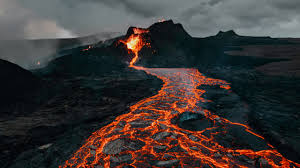NASA has established an Independent Review Board, or IRB, to proactively assist with assessment of current plans and goals for the next generation of Earth-observing satellites, designed to propel us forward in understanding our changing planet: NASA’s Earth System Observatory.
The new set of Earth-focused missions will provide key information to guide efforts related to climate change, disaster mitigation, fighting forest fires, improving weather and air quality forecasts, and improving real-time agricultural processes. Within the observatory, each satellite will be uniquely designed to complement the others, providing a 3D, holistic view of Earth, from bedrock to atmosphere.
The independent review board will help NASA review the technical concepts developed during preliminary formulation so far for robustness, as well as the ability to satisfy the mission’s essential requirements. It will help ensure NASA is adopting lessons learned from experience with previous large, strategic science missions.
“The Earth System Observatory will take us into the next generation of remote sensing,” said Thomas Zurbuchen, NASA’s Associate Administrator for the Science Mission Directorate at the agency’s Headquarters in Washington. “We are designing the observatory to give us the most comprehensive view yet of how Earth is changing. By strengthening our scientific understanding, we can provide information for people and communities around the world to plan for the future.”
The observatory seeks to implement recommendations from the 2017 Earth Science Decadal Survey by the National Academies of Sciences, Engineering and Medicine, which lays out ambitious but critically necessary research and observation guidance for our changing planet.
Areas of focus for the observatory include:
- Atmosphere Observing System, managed by NASA’s Goddard Space Flight Center, which examines:
- Aerosols: Answering the critical question of how aerosols affect the global energy balance, a key source of uncertainty in predicting climate change.
- Cloud, Convection, and Precipitation: Tackling the largest sources of uncertainty in future projections of climate change, air quality forecasting, and prediction of severe weather.
- Mass Change, managed by NASA’s Jet Propulsion Laboratory (JPL): Providing drought assessment and forecasting, associated planning for water use for agriculture, as well as supporting natural hazard response.
- Surface Biology and Geology, managed by JPL: Understanding climate changes that impact food and agriculture, habitation, and natural resources, by answering open questions about the fluxes of carbon, water, nutrients, and energy within and between ecosystems and the atmosphere, the ocean, and the Earth.
- Surface Deformation and Change: Quantifying models of sea-level and landscape change driven by climate change, hazard forecasts, and disaster impact assessments, including dynamics of earthquakes, volcanoes, landslides, glaciers, groundwater, and Earth’s interior.
Surface Biology and Geology, Mass Change, and the Atmosphere Observing System had successful mission concept reviews earlier this year. The results of the IRB will be used to inform any architecture changes to the mission concepts prior to this fall when these missions are expected to enter the concept and technology development phase – known as Phase A – resulting in proposed mission architectures. Surface Deformation and Change is in an extended study phase in advance of Phase A.
Read more at: Nasa.gov









